Truck Pulling’s Dark Horse: Josh Graver’s One-Of-A-Kind 1,100hp 6.7L Ford Diesel
For decades, Ford trucks had a hard time competing in the sport of sled pulling—at least those that were equipped with their native, Power Stroke diesel V-8 (and not a Cummins). But beginning with the 6.7L Power Stroke, the injection system shortcomings and reliability issues that’d plagued earlier engines were gone, and the design’s potential for making big horsepower was soon realized. Owning a 6.7L Ford daily driver of his own, Josh Graver could see the momentum behind the 6.7L Power Stroke building, and he decided to give the platform a try in one of truck pulling’s newest yet most competitive classes.
Josh’s ‘11 Super Duty competes in the 8,000-pound Pro Street Diesel Truck category, a field that has shown solid growth since being introduced in 2017. And while it’s considered by many to be an entry-level type of class, it requires an engine making north of 1,100 hp to have a shot at winning. But not only that, engines have to make their power on fuel alone, with no aid from nitrous or water injection—and they have to do it using a single, smooth bore turbo with an inducer that measures 2.6-inches (66mm). Join us for a look at how Josh has made the rare, 6.7L Power Stroke a contender in the Pro Street field.
A Rare Breed
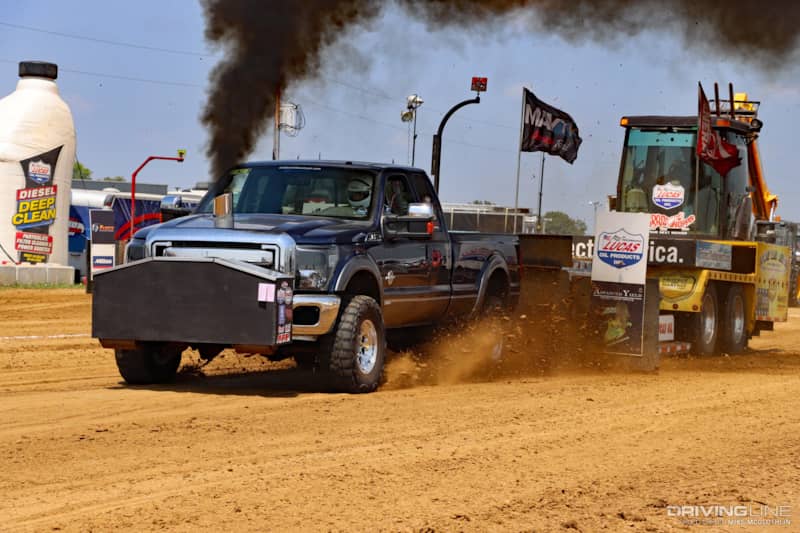
Josh Graver’s 2011 F-350, nicknamed “The Holler Hooker,” is a rare breed in the Pro Street Diesel Truck sled pulling category—namely because it’s a Ford packing Ford power and not a Cummins swap. A typical trip down the track entails the diesel V-8 singing a 4,000-rpm song, the 35-inch Mud Grapplers slinging copious amounts of dirt and the truck building 30-mph worth of ground speed. Josh is quick to point out that Renegade Diesel’s Sheldon D’Huyvetter was a major help in the build, that all engine and transmission credit goes to his good friends Jared Rice and Patrick Marler, and that none of this would’ve possible without the help of his brother, Justin.
Battle-Prepped Power Stroke
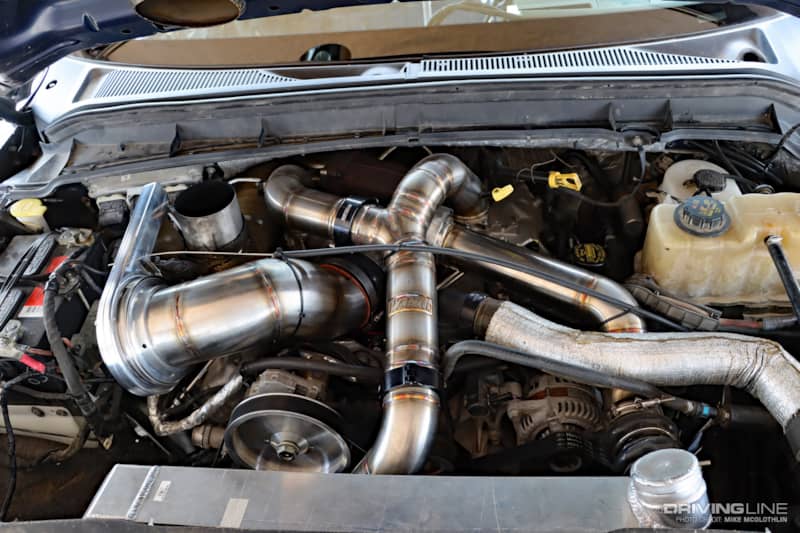
Under the masterfully welded raw turbo piping from Point Zero Fabrication, you’ll find a 2020 model year 6.7L Power Stroke. From top to bottom, it’s been prepped to handle the stresses imposed by the (estimated) 1,100 to 1,200 hp it turns out. The block and heads were both machined to accept fire-rings, a factory crank, secured via girdle, swings a set of billet connecting rods from Wagler Competition Products and a coated set of the engine’s factory steel (monotherm) pistons are employed. An RCD Performance Stage 1 cam, Wagler ported heads with stiffer valve springs and ported intakes from Odawgs Diesel sum up the rest of the recipe. ARP fasteners are employed throughout, which includes main and head studs.
Big Power, Despite Air Limitations
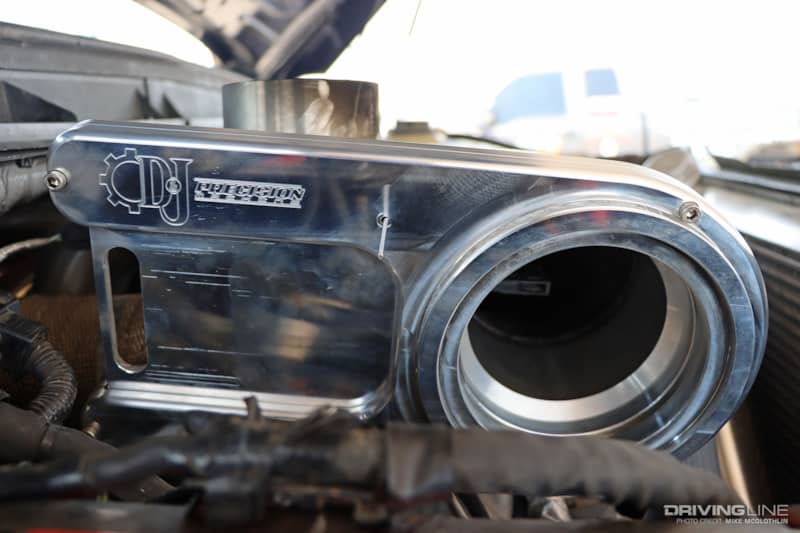
It’s hard to tell here, thanks to the blingy air guillotine provided by D&J Precision Machine, but a pretty serious turbocharger sits on the other side of it in the lifter valley. It’s a BorgWarner S400-based unit from Wimer Fuel Injection & Turbo, a household name in the world of gigantic tractor turbos. Pro Street class rules dictate that only a smooth bore (no map width groove) turbo with a 66mm (2.6-inch) diameter inlet can be run, but you can bet that Wimer worked its wizardry on its compressor wheel. On the exhaust side, plenty of flow is on tap thanks to the T6 charger’s loose A/R housing and 96mm turbine wheel.
CP4.2, CP3 Combo
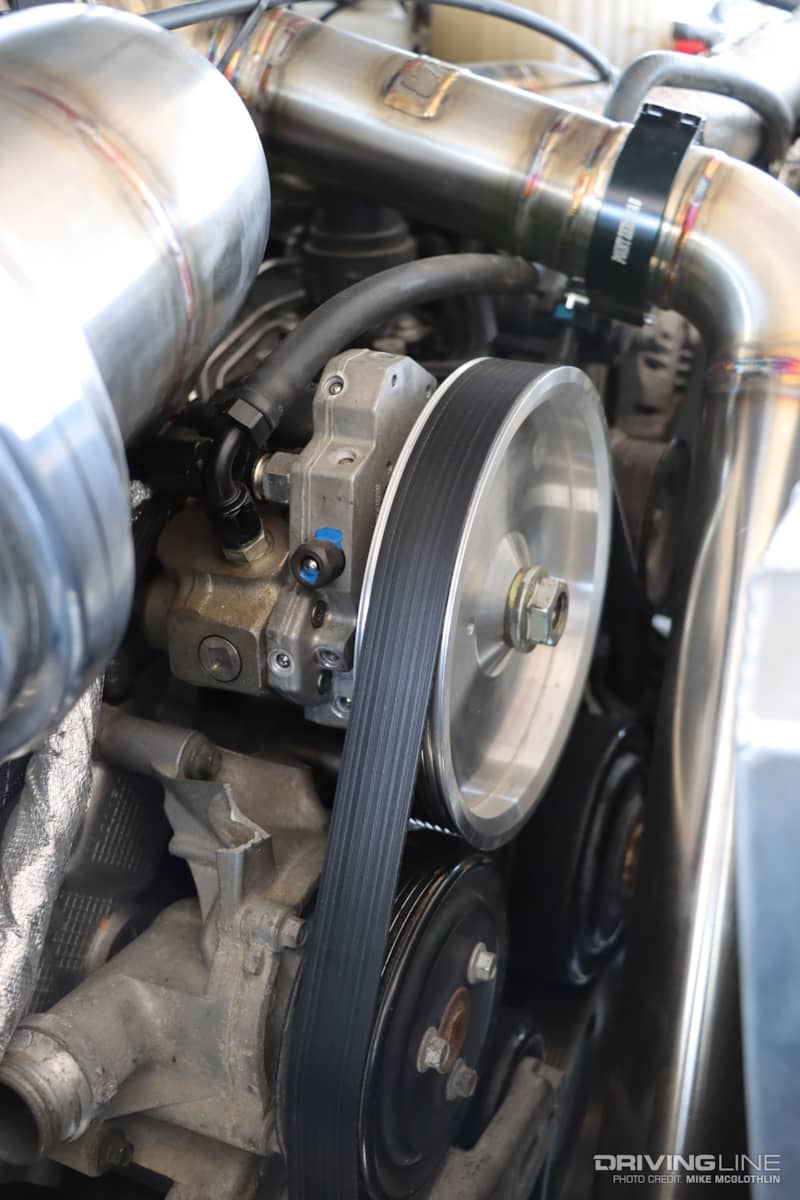
Running the right high-pressure fuel pump is the name of the game in common-rail diesel performance, and Josh runs two of the best. Here, you can see a belt-driven Bosch CP3, a 12mm stroker unit from S&S Diesel Motorsport that can support 1,100 hp in a single pump application. In the factory location, Josh runs a stroker CP4.2 pump from RCD Performance. The pair of modified high-pressure fuel pumps supply roughly 30,000-psi to the rails and, ultimately, the injectors. S&S also got the call for the engine’s competition injectors, responding with a set of 150-percent over units. The injection system (and the engine itself) is fine-tuned by Azraie Dumont.
Dual Low-Pressure Fuel Systems
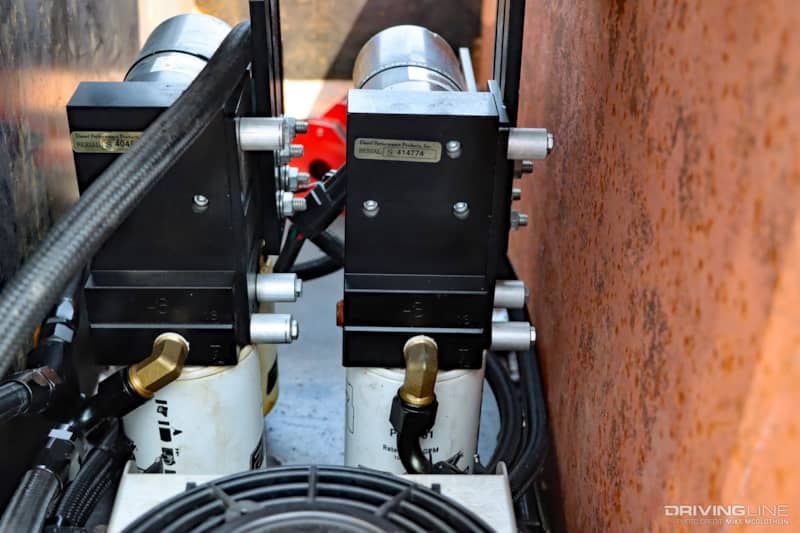
Up in the weight box, you’ll find two FASS fuel supply systems stowed away. One is capable of flowing 220-gph and the other 240-gph, which would be extreme overkill in most applications. However, being that the CP4.2 requires 55 to 65 psi on the low-pressure side at all times, one FASS system is dedicated to ensuring that’s always the case. The second system satisfies the CP3 high-pressure fuel pump’s need for 15 to 20 psi. The two systems only tie in with each other on the return side of things. Next to the FASS pumps, and because only 2.5 gallons of diesel fuel are onboard, a Derale Performance auxiliary cooler keeps fuel temperature in check.
Fortified TorqShift Transmission
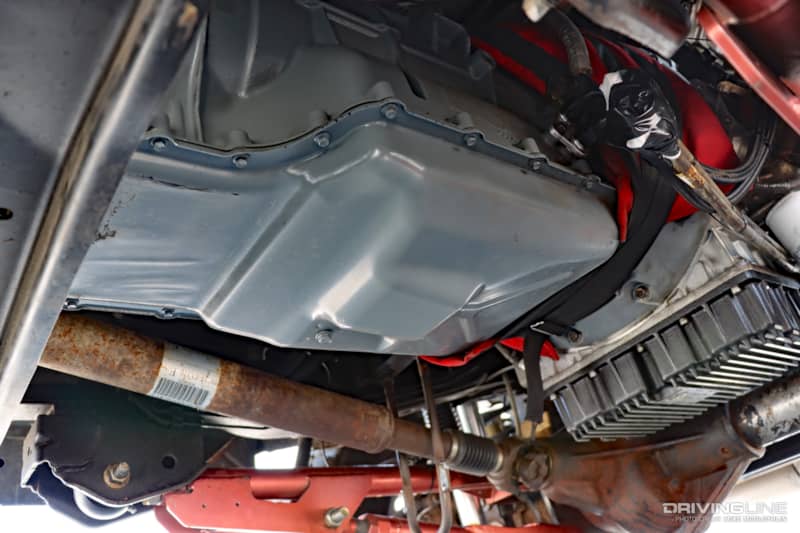
No fancy transmission pan here, it’s what’s inside that counts. Jared Rice and Patrick Marler, longtime friends of Josh’s, pieced together the truck’s 6R140 automatic transmission—a unit that’s proven bulletproof throughout 32 hooks so far. It utilizes a Precision Industries’ built, 3,000-rpm triple disc torque converter, is equipped with billet input and intermediate shafts and makes use of Raybestos GPZ clutches. The six speed TorqShift spends its time in fifth gear throughout the course of a hook (with the transfer case locked in low).
Dana Axles, With Proven Upgrades
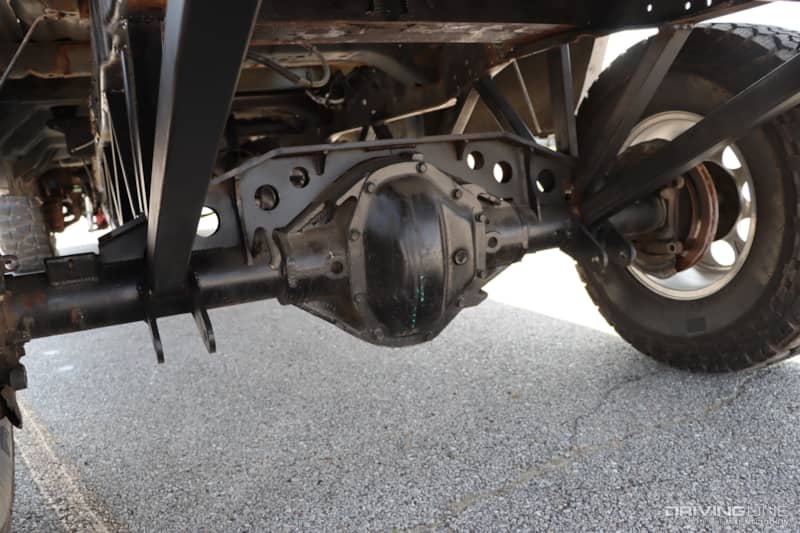
Making sure every link in the power-transfer chain was up to snuff, Josh swapped a Dana 80 in place out back. The proven rear axle benefits from Yukon’s chromoly axles, spool and a 5.38 ring and pinion. Up front, the Dana 60 has been graced with late-model axle shafts (for their larger U-joints), one of Yukon’s Grizzly lockers and a set of Yukon’s 5.13 gears. Being that there is no 1:1 ratio gear in the TorqShift transmission, Josh went with the low (numerically high) axle ratios in order to achieve the final drive ratio he was after.
Constantly Clawing Forward, Thanks To Mud Grapplers
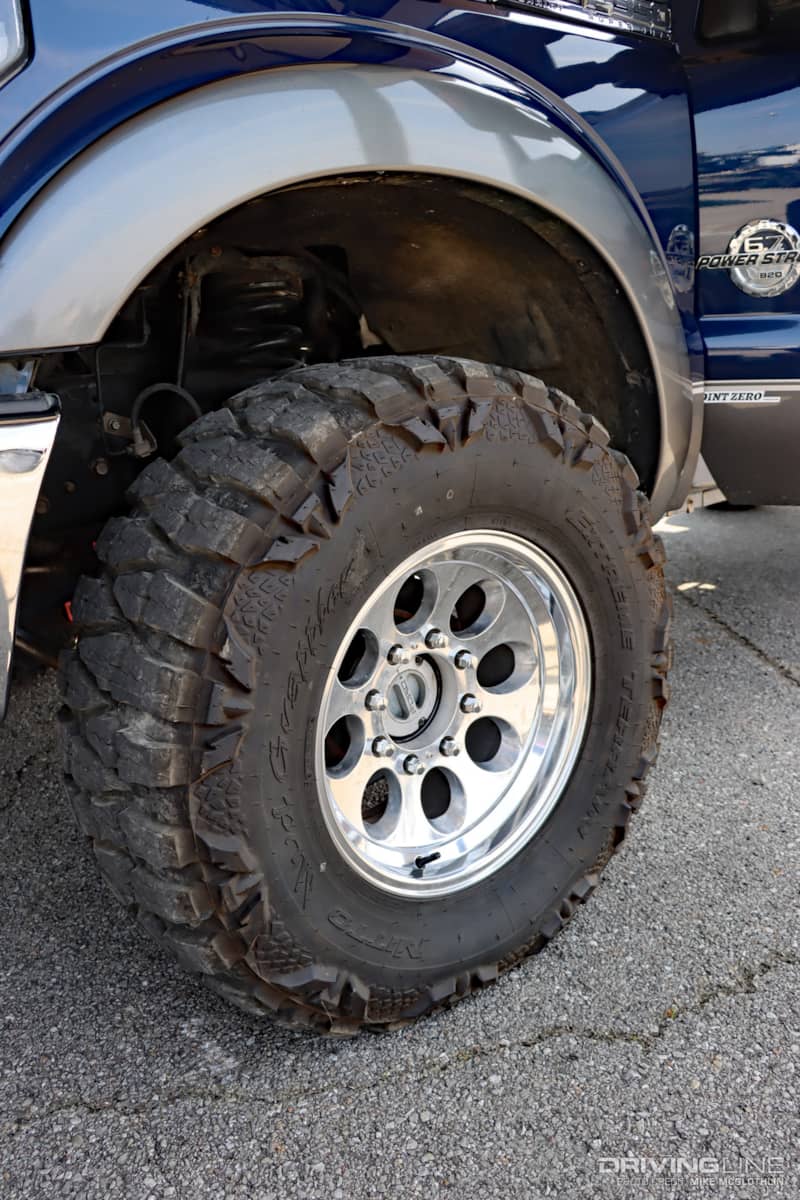
Aggressive tire choice has become commonplace in truck pulling in recent years—and arguably no other DOT tire on the market is as aggressive as Nitto’s Mud Grappler. Josh’s Ford campaigns a pair of 35x12.50R17 Mud Grapplers up front, where their sizeable lugs never fail to take a big bite out of the track. Depending on the type of pulling surface he’s faced with, Josh inflates the mud terrains as high as 30-psi (on a tight track) or as low as 17-psi (on a loose track). The Mud Grapplers are mounted on 17x9-inch polished Ion wheels.
Fully Adjustable Front Suspension
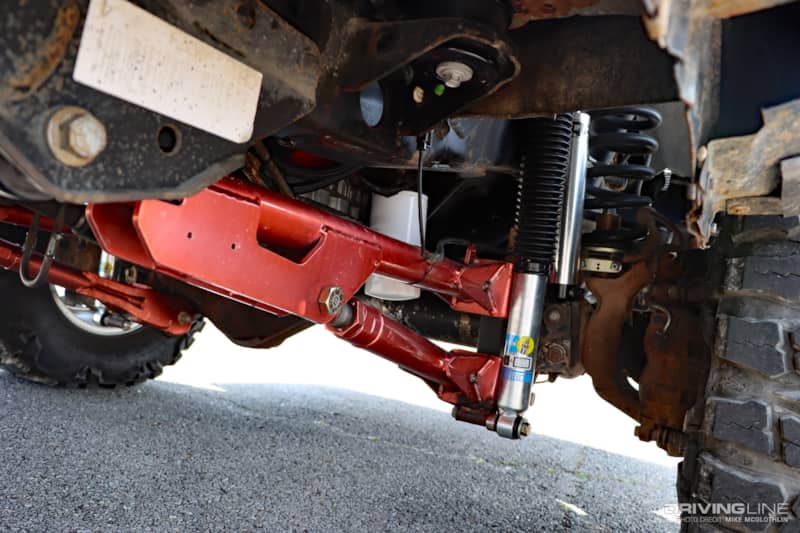
With solid suspension out back, all fine-tuning of the truck’s suspension takes place up front. Here, Josh calls upon QA1 dual adjustable shocks to dial in the coil sprung front-end. Guarding against deflection and maintaining the correct front axle pinion angle throughout the entire range of travel is a set of One Up Offroad’s adjustable link arms. Perhaps most important, the factory, stamped steel radius arms are gone, which are a major source of front-end hopping when ’05-newer Super Duty’s hook to the sled.
The No-Frills Cockpit
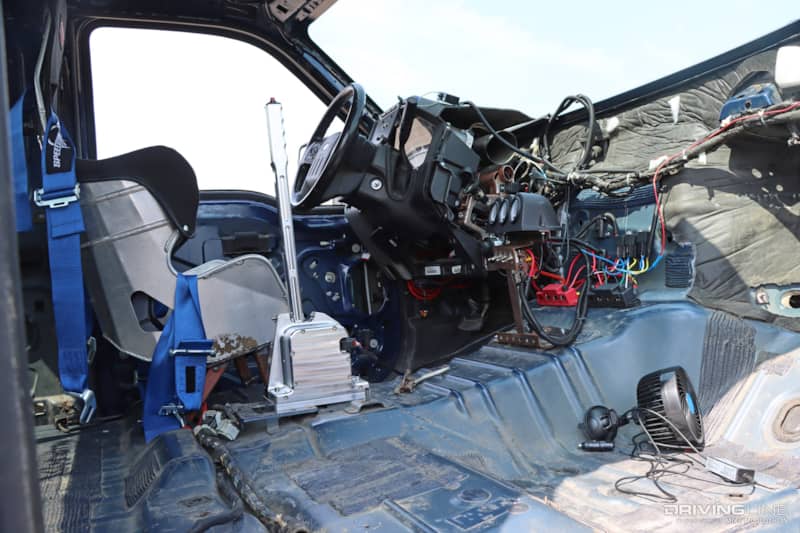
It’s all business in the interior. No, there is nothing pretty about it, but everything bolted in place here serves a purpose when it’s go-time. From the GlowShift analog gauges and on/off toggle switches to the GP Diesel billet hand throttle to the Kirkey race seat, no extras or distractions exist in the gutted cab. Here, Josh brings the 6.7L Power Stroke up to 4,500 rpm leaving the line, rolls out, locks the converter and attempts to get more than 45,000 pounds worth of sled and Super Duty faster than 30 mph—until it all comes to an abrupt halt. Whether you’re behind the wheel like Josh or watching from the stands as a fan, it’s a rush.
More From Driving Line
- Want to learn more about the Pro Street Diesel Truck pulling class? You’ll find everything you need to know and more right here.







